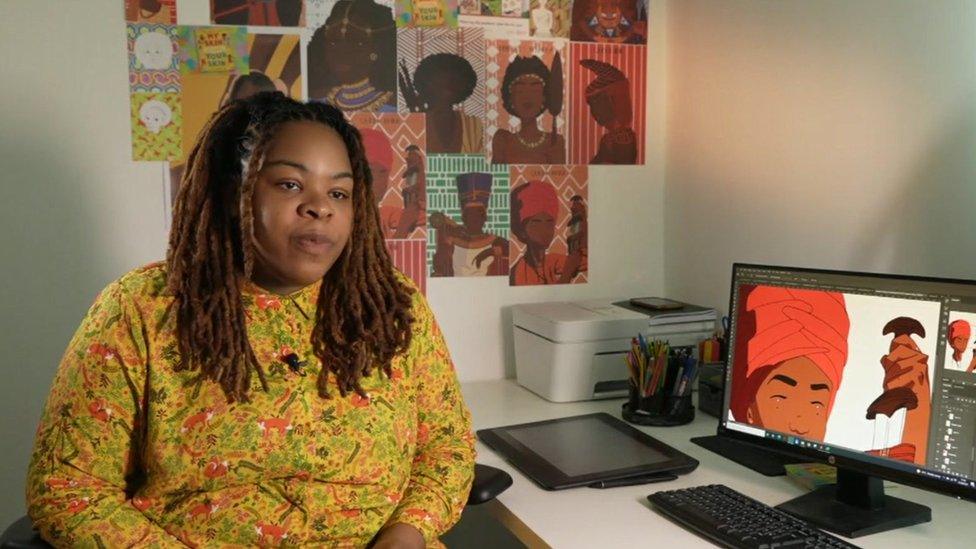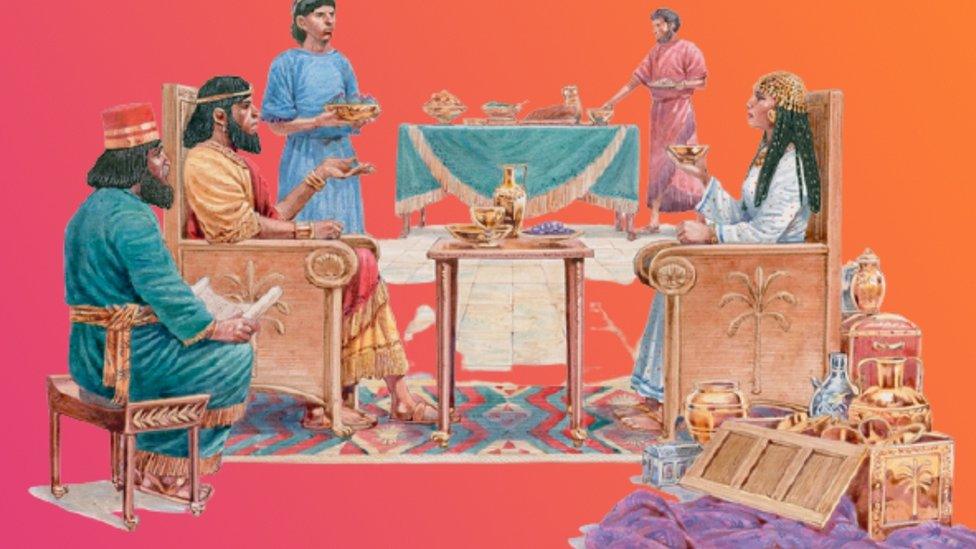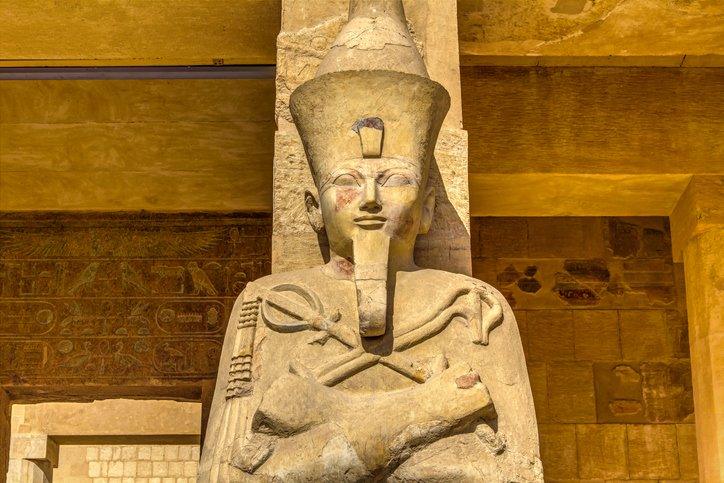Black History Month: Meet some of Africa's inspiring queens!
- Published
Meet some of Africa's inspiring queens!
How many celebrated royal leaders can you name from history?
And how many of those are men - and how many have diverse heritages?
Well, that's because most of the royals we hear about in history lessons are white, often they are European, and usually they are men.
Now, one author is trying to change that with a focus on telling the stories of Africa's queens.
From the Queen of Sheba to Egypt's Queen Hatshepsut who ruled long before Cleopatra, there are loads of inspiring stories you may not know.

Author and illustrator Onyinye Iwu is trying to tell more people the stories of female African leaders
If you are looking for tales of inspirational female role models, look no further - author and illustrator Onyinye Iwu has drawn African women who ruled across the continent, providing just that.
She's included queens, political leaders and leaders of movements in her collection called 'Queens of Africa'.
Speaking to BBC What's New reporter Jean Otalor, she said it's because in lots of cases, "a lot of women were left out, ignored or erased" from the continent's history books.
The women she's drawn were all loved and respected for their leadership in Africa, and have been "role models since ancient times", Onyinye said.
Africa is the second largest continent in the world
It is made up of more than 50 countries
1.3 billion people live there, which is more than 16 percent of the world's population
Who runs the world?
The women who ruled Africa throughout the years all helped shape the future of the continent, but Onyinye said that she "didn't grow up knowing much about any queens".
Helping change that for young girls today, Onyinye spoke to the BBC about three great African queens she included in her series.
Queen Nzinga Mbandi (1583-1663).

An artist's illustration of Queen Nzinga fighting against Portuguese invaders
She ruled over the kingdoms of Ndongo and Mtamba, which were located in what is now known as Northern Angola.
She spent almost 40 years fighting for her people against the invading Portuguese and was a key figure in resisting the expanding slave trade in central Africa.
Iwu said that she was trained from a young age to be a military leader, including learning Portuguese, so later she was able to communicate with the armies that tried to colonise her kingdom - she was described as a skilful negotiator.
Queen Makeda, otherwise known as Queen of Sheba.

The Queen of Sheba meeting King Solomon
There are lots of stories about her, some historical and some mythical. The queen, mentioned in great religious works, is said to have ruled the kingdom of Sheba.
According to legend, she embarked on a long journey to visit King Solomon of Israel 3000 years ago. The story of her visit features famously in the Bible, where she's quoted as saying: "I am black and beautiful, O daughters of Jerusalem".
There's lots of debate about where she was actually from - Ethiopia is one country that claims she was born there.
Onyinye said that she's an inspiring role model because she was confident, and was well known as a ruler all across Africa.
Queen Hatshepsut of Egypt

Statue of Queen Hatshepsut, in Luxor, Egypt - portrayed as a man
You may have heard of Cleopatra, but Hatshepsut ruled long before she did, and was only the second woman to do so.
The only female pharaoh before her was Sobekneferu, who ruled for four years when her brother Amenemhet IV died without an heir.
Hatshepsut was the female king of Egypt between 1473-58 BCE and the first to attain the full powers of the position.
In portraits, she was often depicted with a male body, in traditional clothes of a king, and with a fake beard!
Historians do not, however, dismiss this as an attempt to pass herself off as a man.
There was an Egyptian artistic convention to show things not as they are but as they should be - by depicting herself as a king, this is how she was viewed.
Onyinye said that Hatshepsut was a powerful ruler, but because she was a woman, she wasn't allowed to show just how strong a pharaoh she really was.
- Published2 July 2020

- Published2 October 2017

- Published26 September 2023

